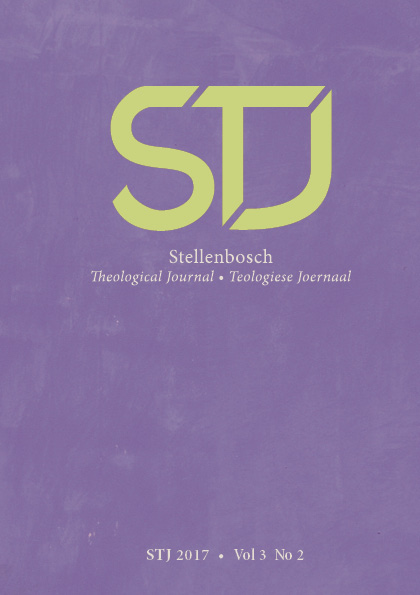Practical theology and narrative: Contours and markers
DOI:
https://doi.org/10.17570/stj.2017.v3n2.a21Keywords:
Narrative, practical theology, experience, community, open endedAbstract
There has been a definite turn in practical theology and theology at large in the last four decades. The inadequacies of the Enlightenment project to keep in tension the rational and non-rational traditions of interpretations, significance of the relative for universal moral appropriation, the importance of lived experiences for identity, the critical engagement of tradition and choice, and the widening gap between the finite and infinite are addressed within a narrative approach. Another voice is added to narrative approaches for the interpretation of person, the world and God. Narrative approach for meaning making of person, world and God through reasoning is embedded in experience.A common thread of narrative theology is that persons can make sense of themselves, the world and God through stories. A narrative approach to theology is much more than a bridge between interpretation and first order language. It is the process, structure, and form of interpretation and reflection of the experience, activities, and communication of the Christian community through stories. An open ended narrative approach engages critically with constants such as reason, particularity, history, community and experience.
A brief overview of narrative within theology and within practical theology in particular is followed by a historical overview of the development of the use of narrative. An open ended narrative with specific characteristics makes up the main components of the article.
Published
How to Cite
Issue
Section
License
Copyright (c) 2017 John Klaasen

This work is licensed under a Creative Commons Attribution 4.0 International License.
https://creativecommons.org/licenses/by/4.0/
Authors who publish with this journal agree to the following terms:
Authors retain copyright and grant the journal right of first publication with the work simultaneously licensed under a Creative Commons Attribution License that allows others to share the work with an acknowledgement of the work's authorship and initial publication in this journal.
Authors are able to enter into separate, additional contractual arrangements for the non-exclusive distribution of the journal's published version of the work (e.g., post it to an institutional repository or publish it in a book), with an acknowledgement of its initial publication in this journal.
Authors are permitted and encouraged to post their work online (e.g., in institutional repositories or on their website) prior to and during the submission process, as it can lead to productive exchanges, as well as earlier and greater citation of published work.
Please note that erroneous copyright information is given in the PDFs before Volume 9, 2023.



